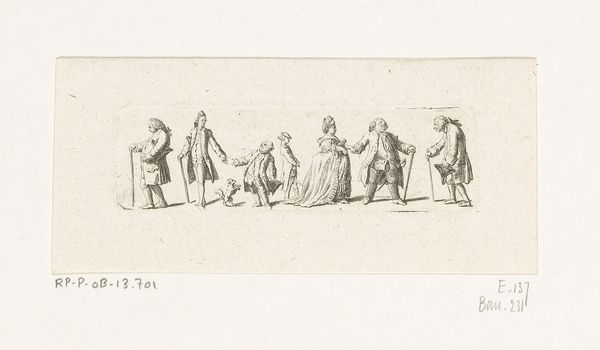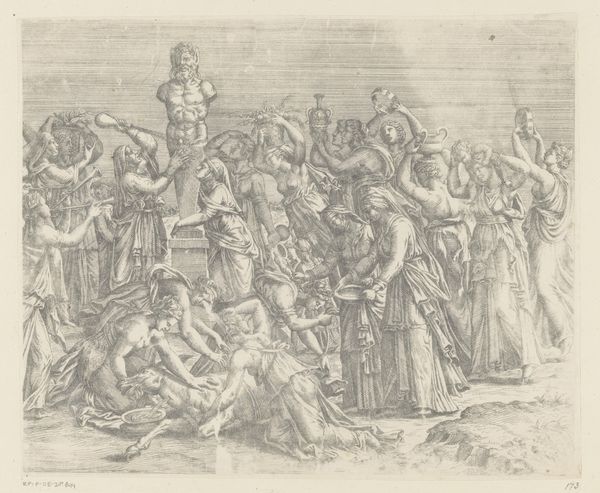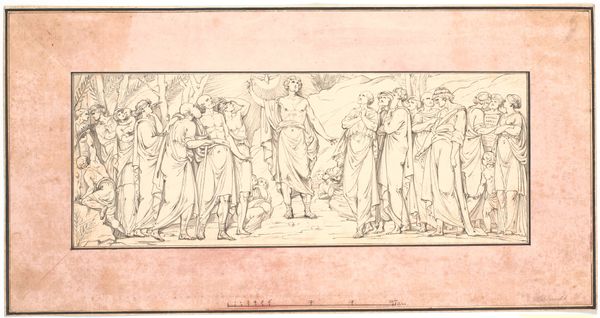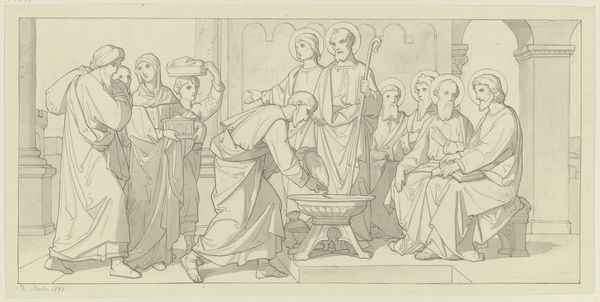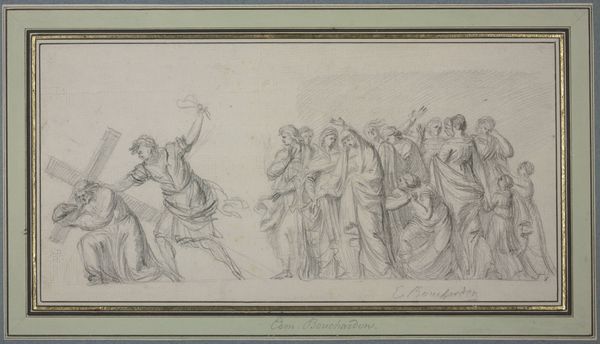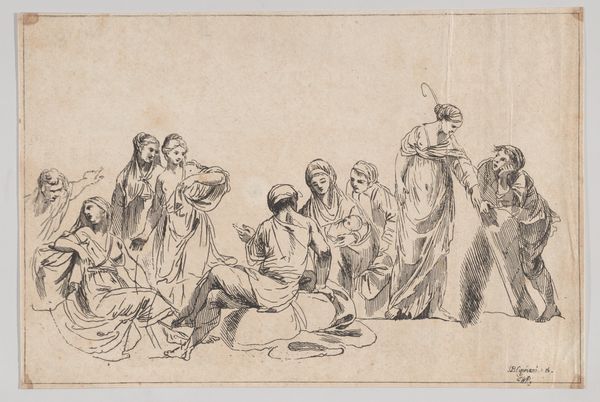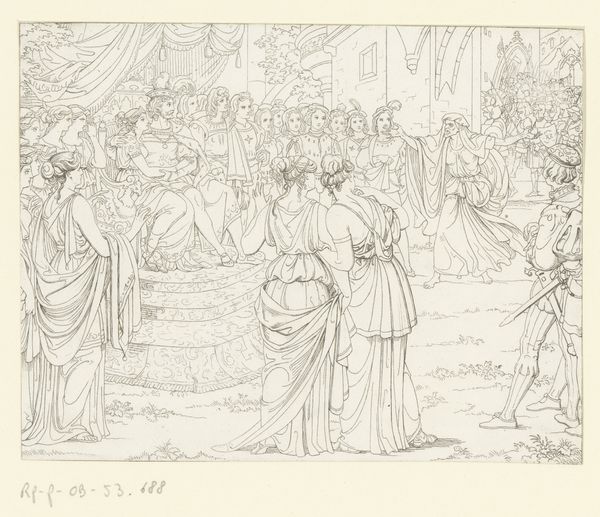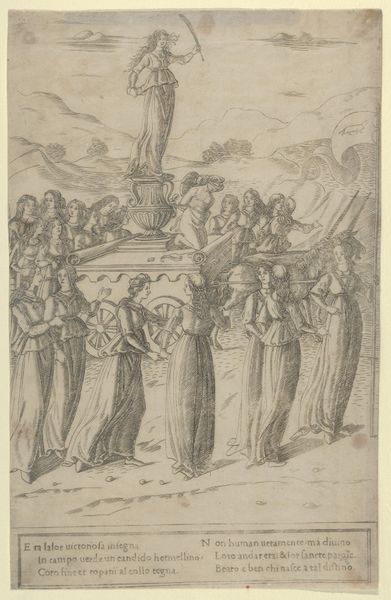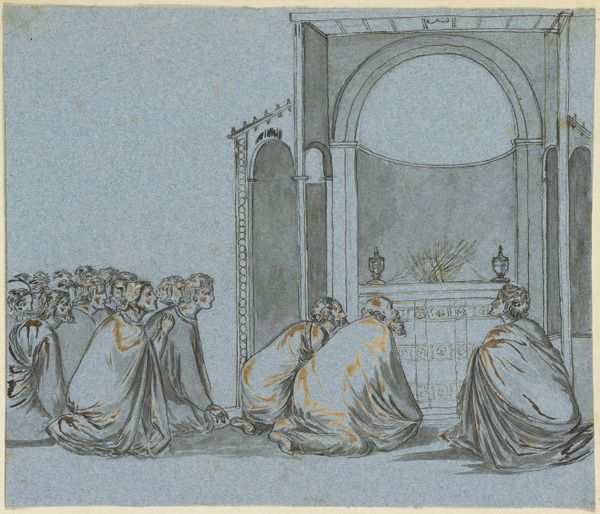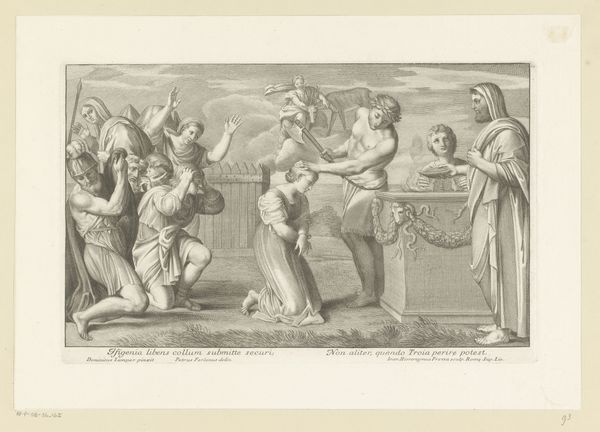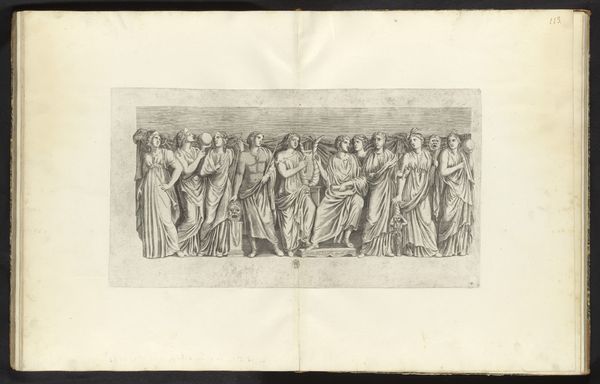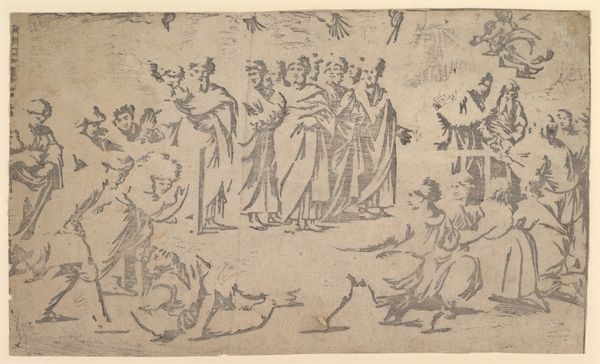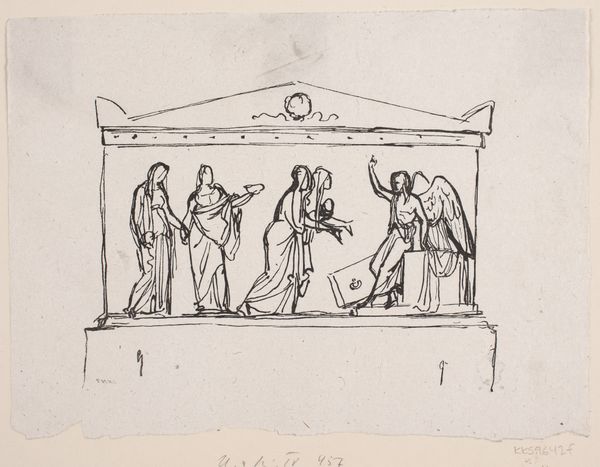
drawing, coloured-pencil, print, paper, ink
#
drawing
#
coloured-pencil
#
allegory
#
narrative-art
# print
#
figuration
#
paper
#
11_renaissance
#
ink
#
coloured pencil
#
history-painting
#
italian-renaissance
Dimensions: 200 × 228 mm
Copyright: Public Domain
Editor: This drawing, “Wedding Procession of Mary and Joseph,” is attributed to Giotto. It's undated but clearly from the Renaissance, made with ink, colored pencil, and possibly printmaking techniques on paper. What I find fascinating is the apparent simplicity of the materials combined with the complex figuration of the biblical narrative. How might we consider its production and meaning through the lens of its materiality? Curator: That's a great starting point. I think by examining the materials Giotto chose – the relative accessibility of ink and colored pencil versus, say, expensive tempera or fresco – and the reproducible nature suggested by the printmaking aspects, we can begin to understand its purpose in circulating ideas more broadly. Who was the audience, and what social needs did this artwork address? Editor: So, you're saying the choice of materials speaks to a potential wider reach beyond just a wealthy patron? Was there a growing middle class consuming art at this time? Curator: Exactly! The conscious choice of these relatively 'humble' materials moves away from notions of unique artistic genius and towards a mode of production tied to workshop practices. Consider the labour involved – the paper making, ink preparation, drawing and printing processes. How does understanding this labor affect how we value the artwork? Editor: That makes a lot of sense. It kind of democratizes the image, even of a religious scene. It takes away the preciousness. I'd never considered the labor involved in such a ‘simple’ artwork! Curator: Right. Think also about the dissemination of imagery - potentially impacting the perceived power of religious or political elites. Are they aiming to reach more people by relying on these techniques? This recontextualizes the image itself from merely a devotional tool to an object reflecting larger shifts in societal values. Editor: It really highlights how material choices are never neutral; they're completely tied to economic and social realities. Thanks, I will never view religious painting the same way! Curator: Exactly! Exploring how artists actively engaged with the production process offers us insight into the society and economies that they inhabited and aimed to portray!
Comments
No comments
Be the first to comment and join the conversation on the ultimate creative platform.
